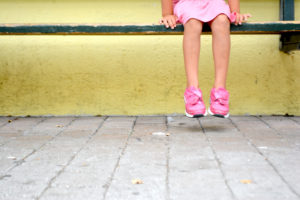This “Color Your Feelings” activity can be used with children, adolescents, and even adults during any stage of therapy. This activity offers a visual approach to discussing internal feelings, which often conflict or are felt on different levels depending on which event is being discussed. This activity is also great in non-traditional settings in which space may be limited such as in school or in the home.
There are many adaptations to this activity. In 1983, the originator of the idea, Kevin O’Connor, discussed the importance of children’s ability to recognize and name emotions in order to express those emotions in an appropriate manner. O’Connor developed “Color your Life” in which he helps guide children in pairing an emotion with a color, and using that amount of color to express how much of that feeling the child is experiencing.
Since then, this activity has been used in numerous ways such as “Color your World”, “Color the Pizza”, “Color your Fist”, or coloring the shape of a body, or other shapes. For some more visuals, check out Creative Social Worker’s blog on this topic.
Scroll down for a free copy you can use with clients today!
(Please note this is an adaptation of the original “Color your Heart” activity by Paris Goodyear Brown. Her newest book, Play Therapy with Traumatized Children describes this activity with even more ideas! Click the title to see on Amazon. The link is an affiliate link which will pay us a small commission but not affect your price).
How is this version different?
1) There may be different topics in which this activity is useful. Begin by establishing the direction of the activity by filling in the blank- “This is how I feel about ___” This helps the client take ownership of his/her feelings.
2) By breaking this activity down into steps, it allows for the therapist to engage with the client in a discussion of mindfully picking a color to represent each emotion. Kevin O’Connor uses this step in his activity: “Therapist: Think of a time when people scrunch up their faces and get very red. Child: Oh, when they get mad! Therapist: Good job. Many people think that the color red matches being angry” (O’Connor, 1983).
Below are some more ideas you can utilize for the Color your Feelings activity.
Color your Feelings for:
Before & After Events
Fill out one heart for before the event occurred, and one for after (or current feelings). This directive helps to integrate feelings that have changed after a significant event or trauma.
Color your Feelings for:
processing conflicting feelings
This activity is a great way to show how one might feel different emotions about the same event. This directive is used to show a visual expression of conflicting emotions, which is oftentimes hard to express verbally.
Color your Feelings for:
Emotional Growth & Processing
ThePlayTherapist.com’s mission is to provide therapists with the tools they need to help children express themselves in therapy. We believe children around the world can benefit when therapists collaborate and share resources to use in therapy.




Thank you for the tips!